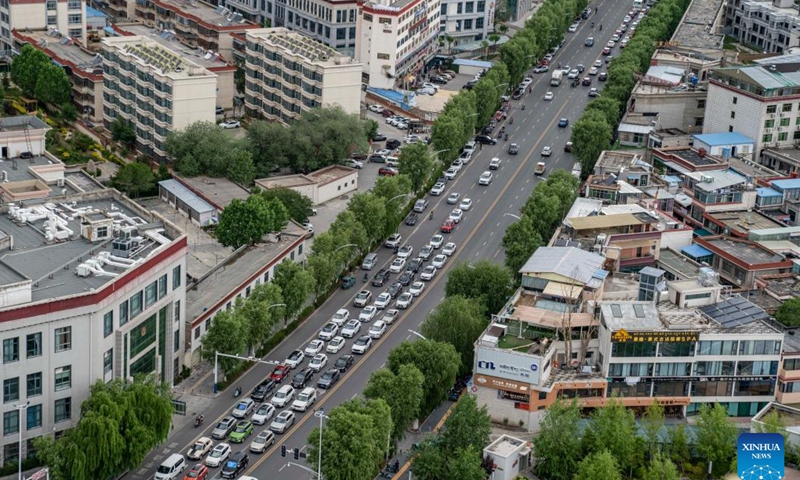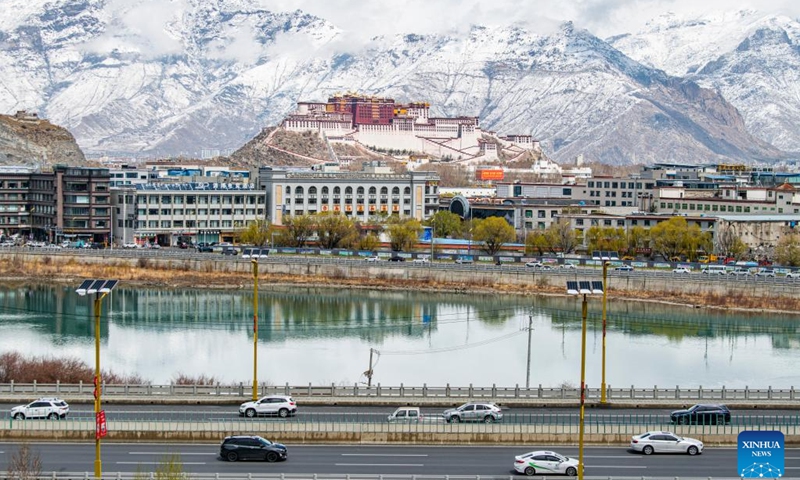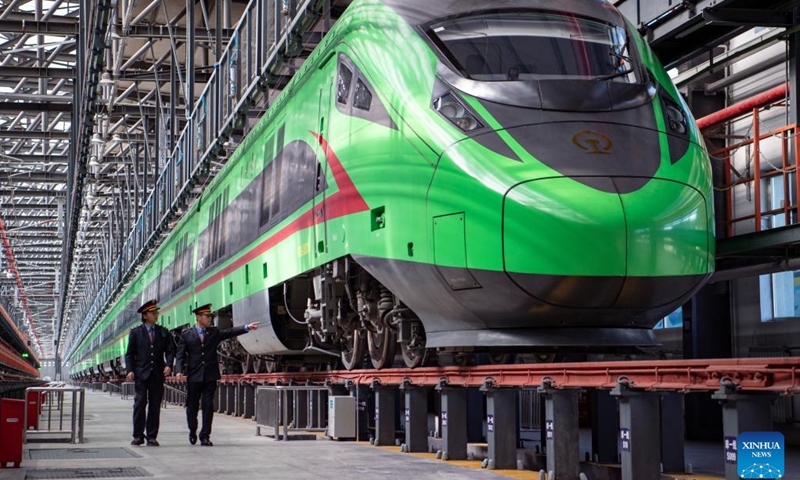
Traffics are seen in a street in Lhasa, capital of southwest China's Tibet Autonomous Region, June 15, 2023, Since the 7th century, the city of Lhasa gradually emerged in the heart of the plateau, nestled within the valley of the Lhasa River -- a tributary of the Yarlung Tsangpo River. The city's rich history spans centuries, characterized by layers of cultural heritage, thereby fostering a distinctive plateau culture that embraces diversity and inclusiveness.(Photo: Xinhua)

This aerial photo taken on March 30, 2023 shows the south ring road in Lhasa, capital of southwest China's Tibet Autonomous Region. Since the 7th century, the city of Lhasa gradually emerged in the heart of the plateau, nestled within the valley of the Lhasa River -- a tributary of the Yarlung Tsangpo River. The city's rich history spans centuries, characterized by layers of cultural heritage, thereby fostering a distinctive plateau culture that embraces diversity and inclusiveness.(Photo: Xinhua)

A "Fuxing" high-speed train is seen at a preparedness center in Lhasa, capital of southwest China's Tibet Autonomous Region, Jan. 11, 2023. Since the 7th century, the city of Lhasa gradually emerged in the heart of the plateau, nestled within the valley of the Lhasa River -- a tributary of the Yarlung Tsangpo River.(Photo: Xinhua)

A marriage proposal is held on the roof of a restaurant in Lhasa, capital of southwest China's Tibet Autonomous Region, June 7, 2023. Since the 7th century, the city of Lhasa gradually emerged in the heart of the plateau, nestled within the valley of the Lhasa River -- a tributary of the Yarlung Tsangpo River.(Photo: Xinhua)
